You are here
Lesson 1: All About Birds
Rainforest birds are diverse. They look different for important reasons.
Bird Colors
Rainforest ecosystems support large numbers and kinds of birds. They have adapted to live in diverse rainforest habitats by taking advantage of a variety of food.
A bird’s beak offers clues about what that bird eats. The strong, large beaks of parrots are perfect for cracking nuts, grinding seeds, and picking fruit. Their powerful beaks are useful for climbing, too. Many birds are omnivores and eat a combination of insects, spiders, and plant parts depending on what’s available. Even nectar-sipping birds like hummingbirds and honeyeaters snack on insects. Birds are the biggest daytime predators of flying insects (bats take over that role at night) and these animals transfer that food energy up the food chain. Birds are also prey for carnivores and bird eggs are sought after by many. Bird parents must guard their nests from snakes, lizards, rodents, and many other rainforest predators that are seeking their nutritious eggs.
In the tropical rainforest, the birds tend to be much brighter than in the temperate or cloud rainforests. This is interesting because the main color of the rainforest is green. Birds like the macaw, keel-billed toucan, and blue-grey tanager have colors that stand out against the green background of the rainforest. Reptiles and amphibians of the rainforest are mostly green in order to hide from predators. They blend in with their surroundings. Why are birds brightly colored? Don’t they have to worry about becoming a meal for a predator? It turns out that being bright colors is the best thing for finding a mate.
The birds of the rainforest live mostly in the canopy and the emergent layer. Up there, the surrounding vegetation is overwhelmingly green. Surprisingly, the adaptation of the bright colors of the male birds work very well for them because they need to be found by their mates. In most types of birds, the male is the one with all of the bold colors. The females are usually dull in coloration. The male uses his bright colors to attract the female. If the male bird did not have such colorful feathers, the female bird would not be interested in him. Even though the bright colors make the birds stand out against the green canopy, the benefits they get from these colors far outweigh the dangers of being seen. After all, birds can fly away if danger gets too close.
The feathers of birds are vital to their survival.
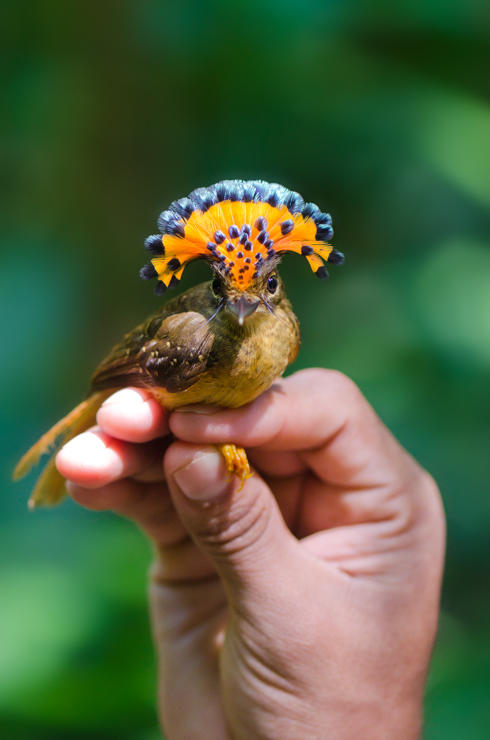
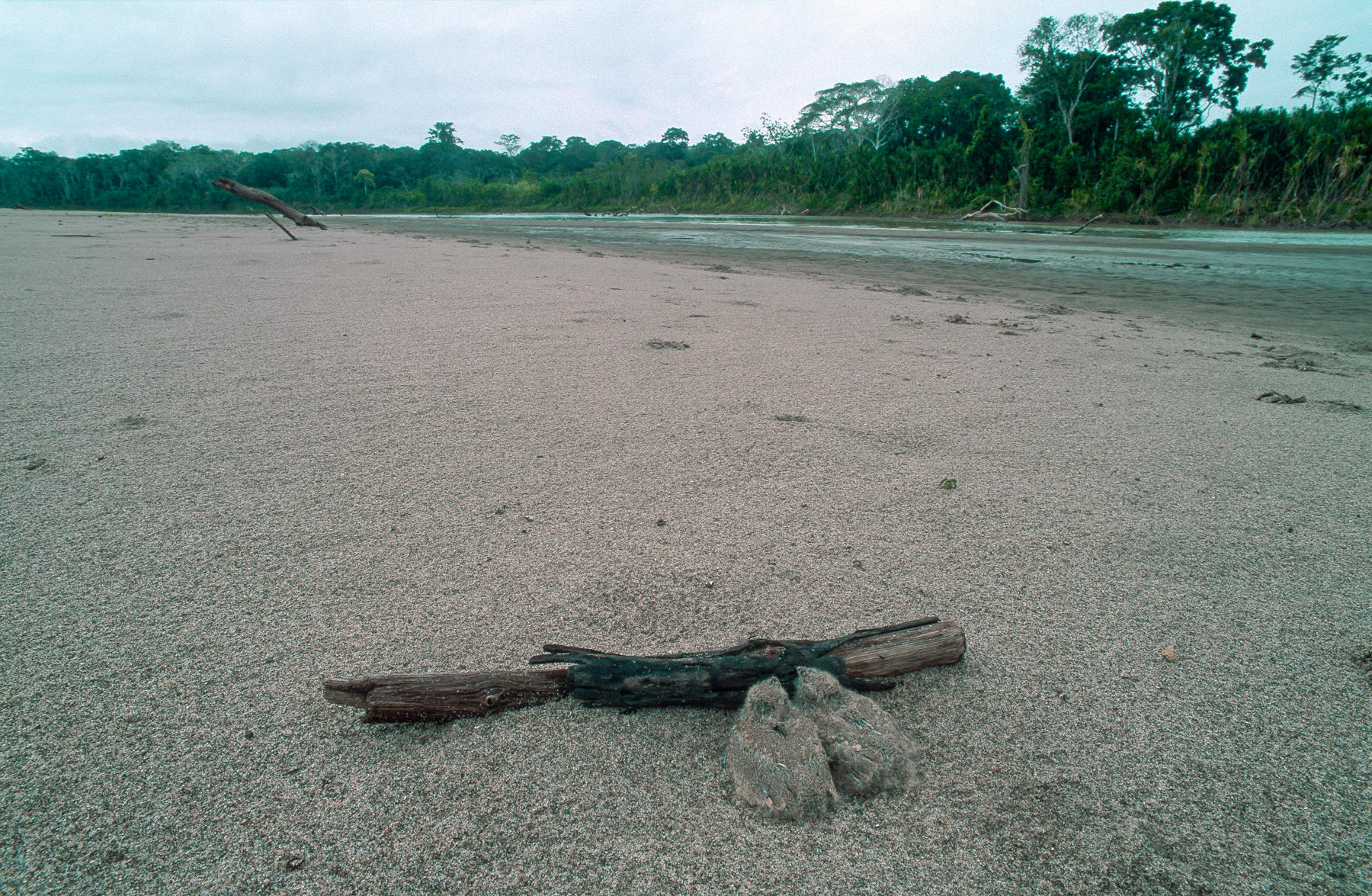
A bird’s feathers are also important for finding mates and for protecting it from predators.
Birds have many bright feather colors. This royal flycatcher has a crest on its head that has orange and blue feathers. Some birds are able to blend in very well with their surroundings. Can you spot the two nighthawks sitting next to the log? Their feathers are a dusty brown color that blends perfectly well into the sand on the beach.
Feathers are an adaptation that keep the bird warm, allow it to fly, and help it to find a mate. Feathers come in many different colors, lengths, and styles. Birds also have several different kinds of feathers that serve various purposes. Some feathers help the birds to get off the ground and other feathers help them to detect vibrations and sense things. Whatever their function, birds need feathers to survive.
Why do the males and females of some bird species look different? Male songbirds are brightly colored while the features of their mates are dull tan. In these birds, males must attract a female mate. Being showy and colorful helps male birds grab the eye of a female. Standing out isn’t a benefit for females. Bright feathers can make them and their young more vulnerable to predators, especially while nesting. Not all female rainforest birds are dull, however. The males and females of most kinds of toucans and waterbirds, such as egrets and herons, look the same.
Some birds only spend part of the year in the rainforest.
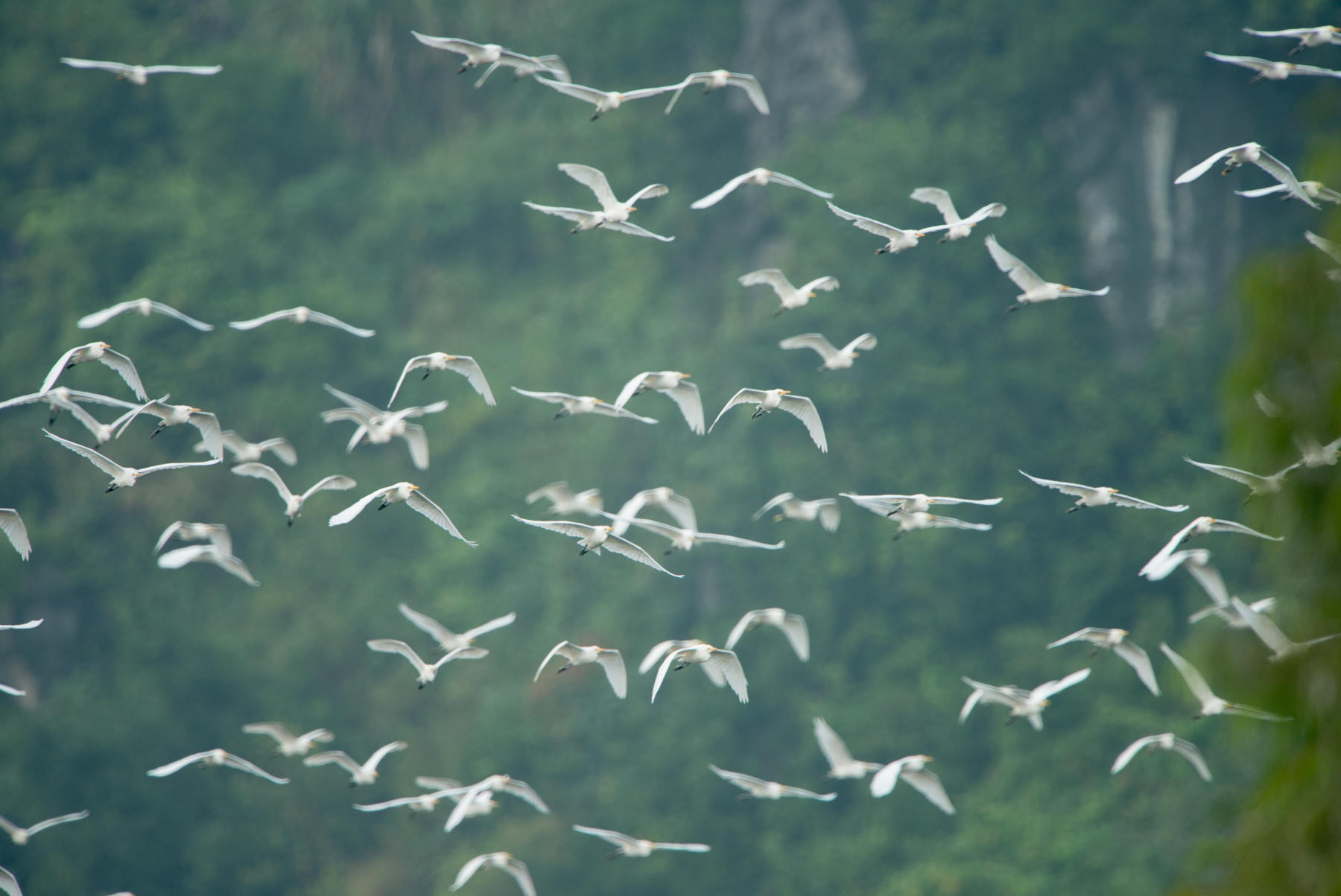
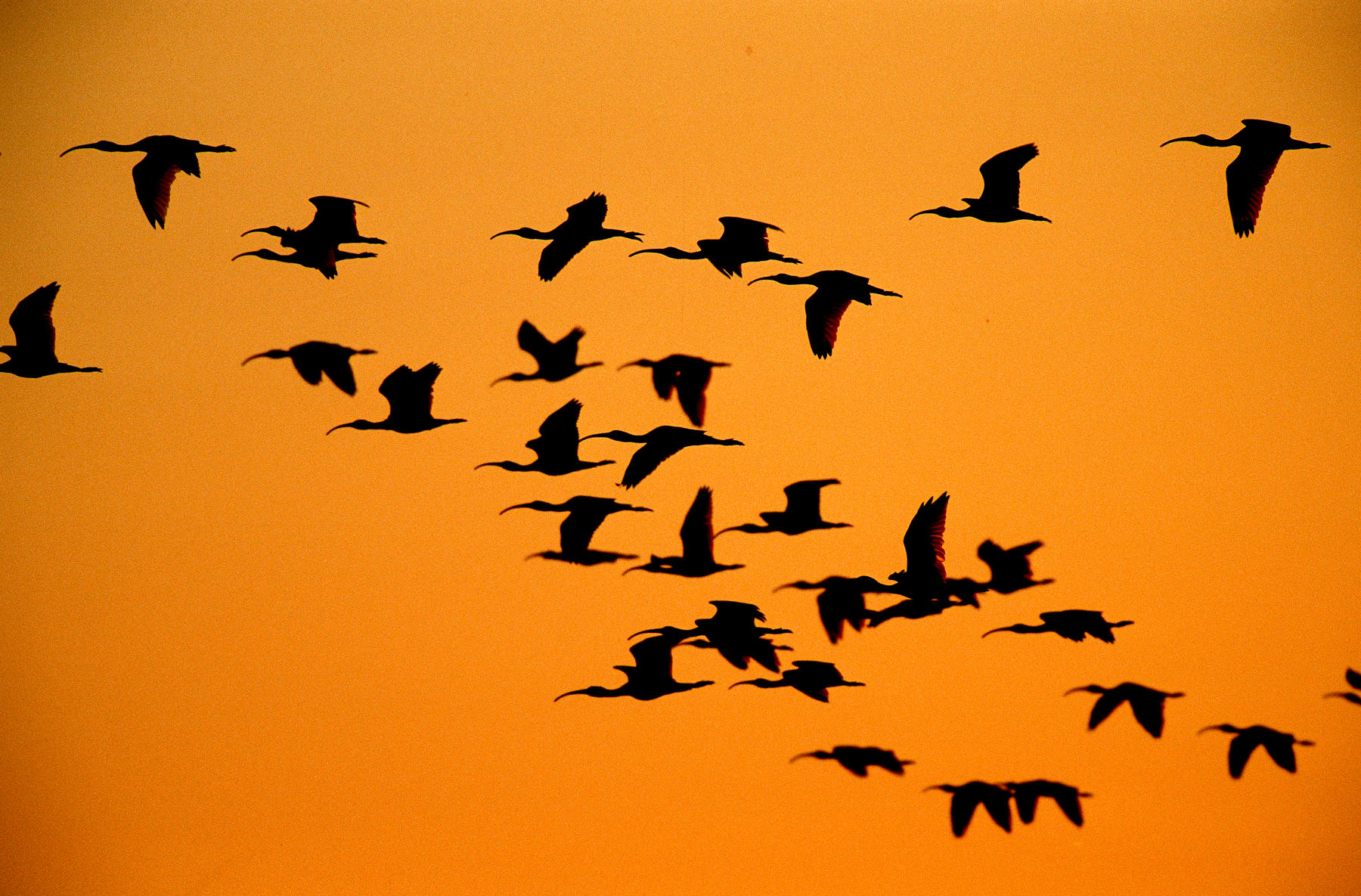
Not all creatures live in the rainforest year-round. Some animals migrate, or journey to the rainforest at certain times of the year.
Why? In regions where winter temperatures kill off insects, insect-eating birds have to leave to find food elsewhere. Many songbirds spend winters eating insects in tropical places, including rainforests. Hummingbirds must leave, too, when winter wipes out the flowers they sip nectar from. The bodies of some birds can’t tolerate low winter temperatures and many birds simply have nothing to eat. When spring arrives, birds like warblers and swallows make the long journey back north to nest and devour summer insects. The cattle egret birds, shown here, spend time in North America. But just before the winter months up north, the birds will fly south seeking the warmer climate.
Cattle egrets travel in large groups during the spring and fall. They do not like cold temperatures, so during the autumn the birds will travel to the south. The birds will stop along seashores on their migration as well as in farm fields. They migrate during periods of dry weather and avoid rain and fog as they travel. In the spring, the birds will migrate back to the north again.
Living in groups has benefits for some rainforest birds.
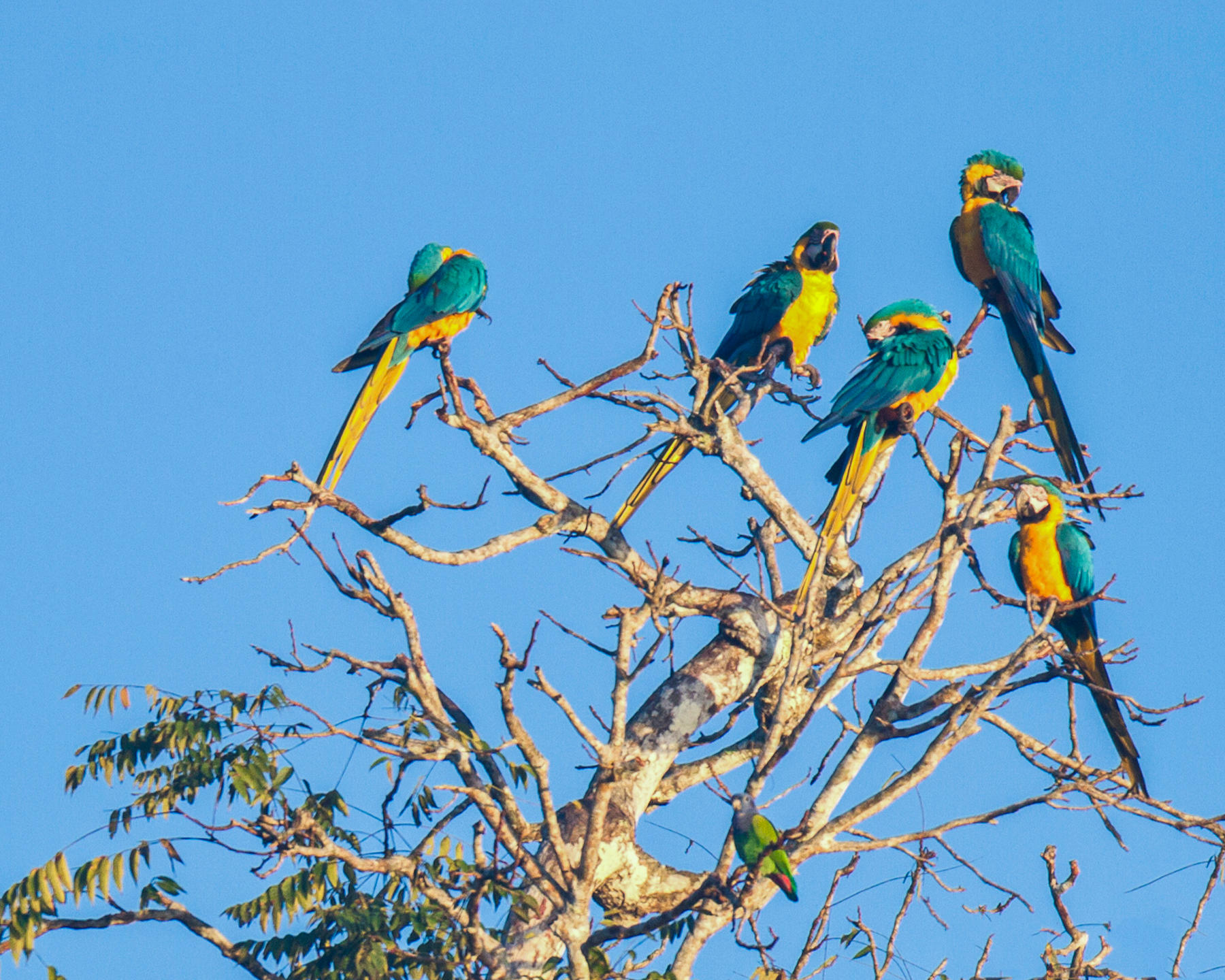
Lots of rainforest birds live in groups, or flocks.
Toucans live in small flocks of 5 or 6 birds, while parrots prefer larger groups of 20 to 30. Lots of birds flock together for part of the day or during a season of the year. Being in a group has advantages. Protection from predators is one. The more eyes there are on the lookout and friends to sound the alarm, the better it is for everyone. If a predator attacks, being part of a flock makes it harder for the hunter to target a single bird. Feeding together as a group has its advantages, too. Joining in with other birds at a fruit-filled tree is easier than flying around until another tree is found. Finding mates and raising young in groups is another reason why flocking together works for birds. Nesting in a group can be safer, which makes feeding and caring for chicks easier.
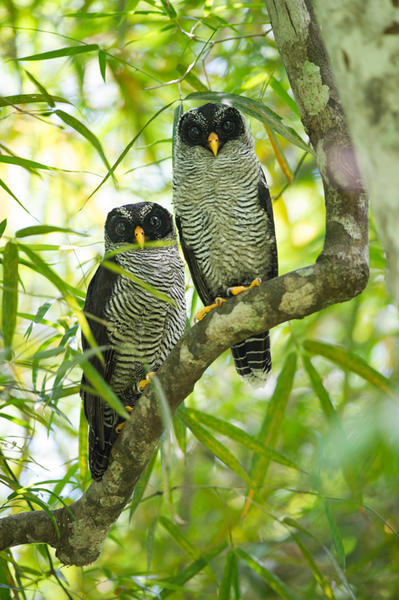
Do you like to hang out with a group of your friends? Owls do, too! A group of owls is called a parliament. Scientists are unclear as to why owls tend to group together, but they do have a few ideas. There is safety in numbers, so owls may group together for protection. Granted, owls do not have many predators, but having several buddies nearby is always good. Another idea is to help them stay clean. Birds are very tidy creatures, but they have trouble reaching all the way on their backs so other owls help clean each other’s feathers. Groups are actually families of owls all living together.
When would living in a group be a bad thing? When food is in short supply. When there is not enough food to feed all of the owls living in one place something called competition happens. Competition is when different owls fight over the same thing. If one of them catches a mouse, then another will try to take it away. This can lead to big fights since sometimes owls get very aggressive towards each other and can hurt each other. If this happens, then usually the biggest and strongest one wins. In spite of the advantages, living in a group is not always the most peaceful way for owls to live.



